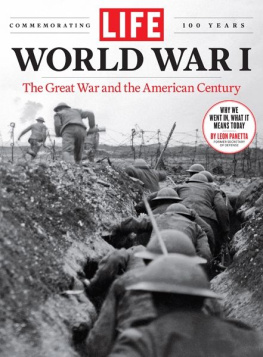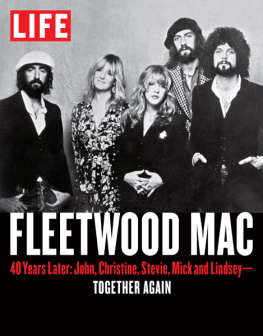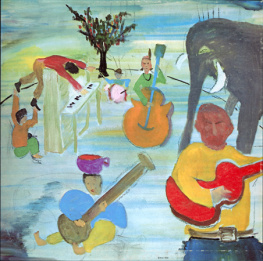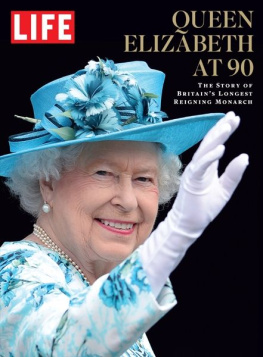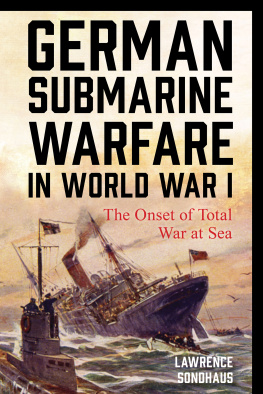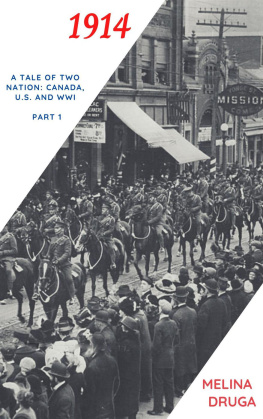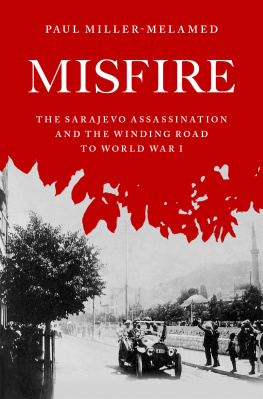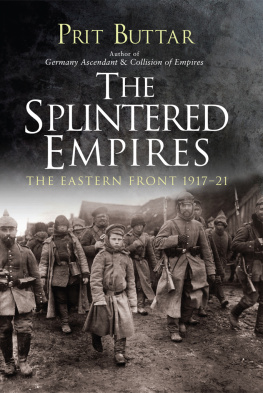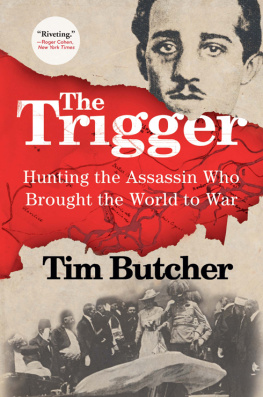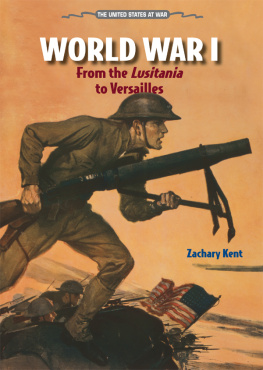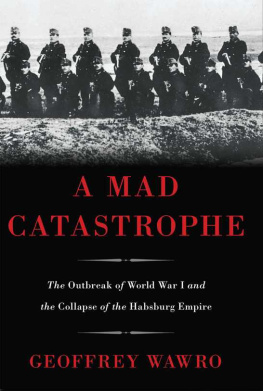
World War I
The Great War and the American Century

PHOTOGRAPH BY A. R. COSTER/TOPICAL PRESS AGENCY/GETTY
American servicemen parade through the streets of London on August 15, 1917.
CONTENTS
FRONT COVER Scottish soldiers from the 10th Battalion leaving the safety of their trench to attack the German lines, on March 24, 1917. Photograph by Lt. J .W. Brooke/IWM/Getty

PHOTOGRAPH FROM HAECKEL COLLECTION/ULLSTEIN BILD/GETTY
Launched in June 1915, the USS Arizona super-dreadnought battleship served as a gunnery trainer during the war and would be sunk at Pearl Harbor on December 7, 1941.
Introduction
A Crisis that Redefined Us
By Leon Panetta
Former Secretary of Defense and Special Advisor to the United States World War One Centennial Commission

HARRIS & EWING/PAUL THOMPSON/FPG/HULTON/GETTY
ON ARMISTICE DAY, 1921, the body of an unidentified American, exhumed in France, was carried from the U.S. Capitol, above, to Arlington, Virginia, where President Warren G. Harding officiated at the dedication of the Tomb of the Unknowns.
On April 6, 1917, the United States entered the worlds stage by declaring war against Germany and joining the Allies in their fight to make the world safe for democracy. In the 19 months that followed, 4.7 million American men and women served in the Great War. Doughboys, as the American men in uniform were called, came from all walks of life: college students, lawyers, store clerks, farmers, and sharecroppers. All servedwhites, African Americans, Native Americans, and recent immigrants from across the globe.
The two million troops that deployed overseas during World War I were led by General John J. Pershing, who organized the men into the American Expeditionary Forces (AEF). Pershings untested warriors proved themselves in pitched, grinding battles on the western front, at Cantigny, Belleau Wood, Chteau-Thierry, and St. Mihiel, and in the 47-day Meuse-Argonne Offensive, which involved more than one million doughboys. Still other Americans fought on battlefields in Italy, northern Russia, and Siberia. By the time the fighting ceased with an armistice at 11 a.m. on November 11, 1918, more than 115,000 Americans had died for their country, including more than 53,000 as the result of combat. At the time it was said this was the War to End All Wars. No one could imagine that an even costlier world war would break out almost 20 years later.
Not only did World War I change how future conflicts would be fought and introduce technological advances in the treatment of battlefield casualtiessuch as the use of mobile X-ray machines, motorized ambulances, antiseptics and prostheticsit also helped to bring the United States into the modern age. Despite these achievements, few people today fully recognize the contribution made by American men and women in 1917 and 1918.
World War I is the only major conflict involving the American military that does not have a national memorial in Washington, D.C. But, for decades after the war, monuments and memorials sprang up in cities and towns across the country. Streets, parks, and other landmarks were named for the great hero General Pershing. In 1981, the American Battle Monuments Commission placed one such memorial to Pershing and the AEF in Washington, just a block from the White House. Known as Pershing Park, the 52-by-75-foot plaza includes an eight-foot statue of Pershing and walls on the east and west sides of the memorial. One wall contains battle maps, while the other bears a transcription of Pershings tribute to the officers and men who served under him. And yet, over time, the park became neglected and was rarely visited.
Today, the United States World War One Centennial Commission, for which I proudly serve as a special advisor, has made it a core mission to establish a World War I memorial at Pershing Park to remind average people, just like those who wore a uniform a century ago, to step forward every day to protect and defend our country.
19141917
War in Europe and Peace at Home
As the world descends into conflict, the United States struggles with whether to join in

ROBERT HUNT COLLECTION/MARY EVANS
CANADIAN TROOPS leave their trenches and head over the top at the Battle of the Somme. The 141-day offensive in 1916 failed to break through the German line and led to more than one million dead and wounded of all nationalities.
As the Austro-Hungarian archduke Franz Ferdinand and his wife, Countess Sophie Chotek, strolled through a bazaar in Sarajevo, the capital of Bosnia-Herzegovina, on June 27, 1914, they passed carpet shops and coppersmiths, singing street clowns and citizens who happily greeted the couple. But as these visiting royals made their way through the markets winding paths, they were not aware that 19-year-old Gavrilo Princip stalked them.
The next day was St. Vitus Day, the anniversary of the Serbs defeat by the Turks in 1389. Many Serbs resented Austria-Hungarys 1908 annexation of Bosnia-Herzegovina, which they considered part of Greater Serbia. For them, it was outrageous that the heir to the Austro-Hungarian throne dared come to Sarajevo on a somber day so rich with nationalist feeling. When the couple returned to the capital that morning, several radicals from the revolutionary group Mlada Bosna (Young Bosnia)of which Princip was a memberawaited them. Hoping to assassinate the archduke and free their land, the group set out with bombs and semiautomatic pistols given to them by the Black Hand, a secret Serbian nationalist group.
The morning was warm in this city with its minarets and villas along the Miljacka River. Colorful banners and flags hung from homes and shops, and Sarajevans lined the main boulevard to watch the six-car procession and catch a glimpse of the proud archduke sporting a helmet with bright green ostrich feathers. But as the procession moved along, a bombthrown by one of the Mlada Bosna conspiratorsbounced off of Franz Ferdinands Grf and Stift double phaeton and exploded under the following vehicle.
Despite the attack, the archduke was determined to keep to his schedule and commented that the man who had thrown the bomb was clearly insane. His driver sped off to the town hall, and after a visit there, the party headed to the hospital to see those wounded by the blast. Along the way, the driver took a wrong turn. As he slowed down to reverse, he happened to stop in front of Princip. The youth pulled out a pistol, jumped onto the cars running board and shot Franz Ferdinand in the jugular and Sophie in the abdomen.
Within minutes, the two were both dead.
Princip had no idea of the events he was setting in motion. While no clear evidence linked the attack to Serbia, the Austro-Hungarian Empire delivered a series of ultimatums to punish that nation for what had happened. After Serbia balked at one of them, the empire declared war on July 28, and a tangle of existing treaties led to an international cataclysm. When Austria-Hungary bombed the Serbian capital of Belgrade, Serbias ally Russia mobilized its troops. Austria-Hungary and its ally Germany subsequently declared war on Russia. Germany also declared war on France and invaded Belgium, in response to which Belgiums ally Britain declared war on Germany.
Next page
